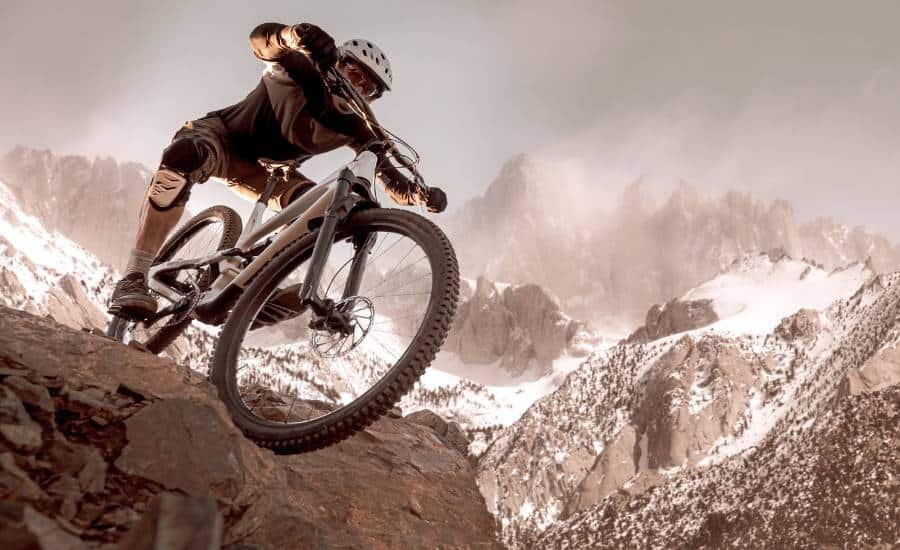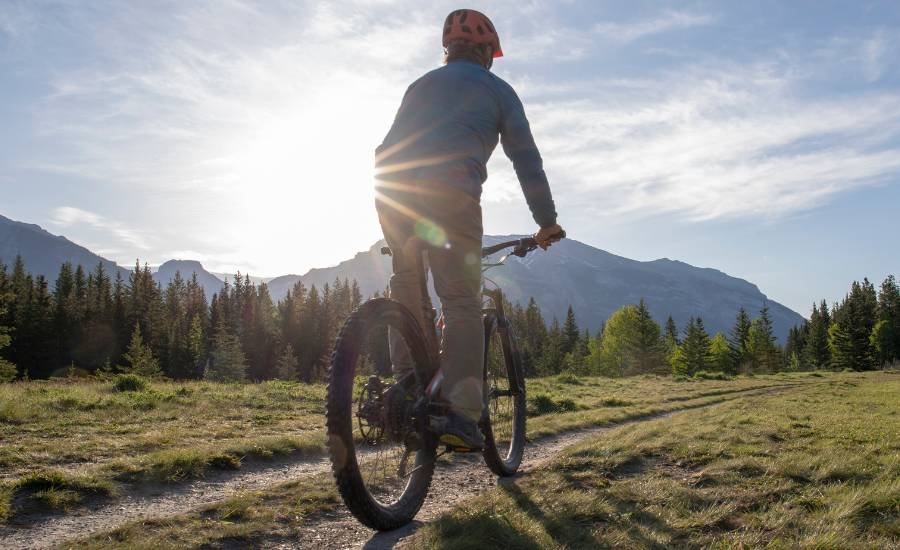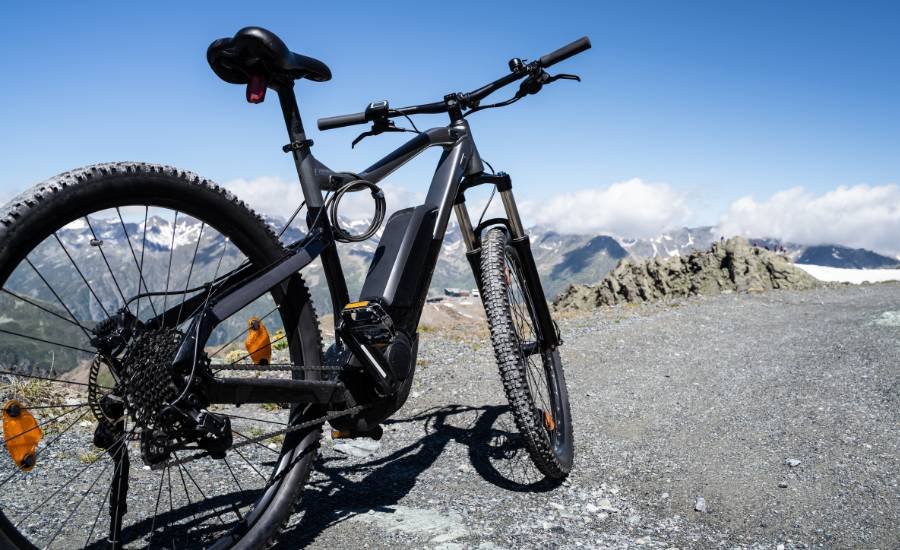Are you sick and tired of struggling up steep hills on your bike, only to arrive at your destination feeling like you’ve run a marathon? Have you ever thought about trying out an electric bike?
Cycling uphill can be a challenge for even the most seasoned cyclist. It requires much effort and endurance, especially on steep inclines. Fortunately, electric bikes (also known as e-bikes) have become more prevalent in recent years, and they can make hill riding a lot easier. In fact, studies have shown that electric bikes are more efficient than traditional bikes for hill climbing.
In this article, we’ll answer some common questions about electric bikes and their ability to handle steep hills. We’ll also provide tips for cycling uphill and highlight the features to consider when buying an electric bike that can handle steep terrain.
If you’re considering purchasing an electric bike and want to know more about how it can help you conquer those challenging hills, keep reading!
Can Electric Bikes Get Up Steep Hills?

One of the most common questions about electric bikes is whether they can handle steep hills. Generally, they can. Electric bikes have motors that provide extra power to help you pedal uphill. The amount of power depends on the type of e-bike and the motor it uses.
There are two main types of electric bike motors: hub motors and mid-drive motors. Hub motors are located in the wheel hub and provide power directly to the wheel. Mid-drive motors are located in the bike’s frame and provide power to the bike’s chain, which drives the rear wheel. Mid-drive motors are more powerful and efficient than hub motors, making them better for hill riding.
The motor’s power is one of many factors to consider when buying an electric bike that’s good for steep hills. The weight of the bike and the rider also play a role. Electric bikes are heavier than regular bikes due to the added weight of the motor and battery. This extra weight can make it more difficult to pedal uphill, especially on steep inclines.
So, if you’re considering buying an electric bike for steep hills, be sure to research and consider all the factors, including the type of motor, weight, and fitness level. Then, with the right bike and a little effort, you can easily conquer those hills.
Tips for Cycling Up Steep Hills

Cycling uphill can be daunting, especially if you’re a beginner or haven’t done it in a while. But don’t worry; here are some tips and tricks that can help make your uphill cycling experience more manageable and enjoyable.
First and foremost, it’s essential to select the right gear. Before starting your climb, ensure that you’re in the right gear. Shifting to a lower gear will make pedaling more manageable and prevent you from exhausting yourself too quickly. You want to maintain a steady cadence, so choose a gear that allows you to pedal comfortably without straining your legs.
Pacing yourself is another crucial aspect of cycling uphill. Don’t try to rush up the hill, as it can quickly lead to fatigue and burnout. Instead, take it slow and steady, and focus on your breathing. Remember to inhale deeply and exhale fully to get the most out of your oxygen intake. Additionally, if you find yourself struggling, it’s okay to take short breaks to catch your breath and rest your legs before continuing.
When it comes to maintaining traction and avoiding slipping, keeping your weight forward is critical. Leaning slightly forward helps keep your weight over the front wheel, allowing you to maintain traction and avoid slipping. In addition, keep your upper body relaxed and your arms bent so you’re ready to adjust your weight distribution as needed.
Lastly, rely on something other than your legs to do all the work. Use the throttle, Most electric bikes come with a throttle that provides electric boost on demand. This can act as an alternative source of power when you decide to rest your legs.
In conclusion, cycling uphill can be a manageable experience. Remember, practice makes perfect, and the more you do it, the easier it will become. So, get out there and start pedaling up those hills!
Is an E-Bike Better Than a Normal Bike Uphill?

Cycling uphill is one of the most challenging aspects of cycling, even for experienced riders. The added effort required to climb steep inclines can leave you exhausted and demotivated. Luckily, electric bikes have made cycling uphill much more accessible, thanks to the extra power provided by the motor. But is an e-bike better than a regular bike for tackling hills?
The answer is a complex one. While an electric bike can certainly make hill riding much less demanding, some downsides should be considered. Firstly, as mentioned earlier, electric bikes are heavier than regular bikes. This extra weight can make it more challenging to handle the bike, especially on steep inclines. However, some e-bikes are designed with a lower center of gravity, which can help to offset this weight and make the bike easier to handle.
Secondly, electric bikes are more expensive than regular bikes. The added cost of the motor and battery can be a barrier for some people. However, many riders argue that the investment is worth it for the added convenience and ease of use provided by the e-bike.
Thirdly, electric bikes require charging. If you plan to use your e-bike for commuting or long rides, you must ensure the battery is fully charged before you start. Running out of battery power on a long ride can be a real problem. However, most e-bikes have a range of at least 40-50 miles on a single charge, which is more than enough for most riders.
So, is an e-bike better than a regular bike uphill? The answer depends on your preference and cycling goals. If you’re looking for an easier way to tackle hills, an electric bike might be the way. However, if you’re on a tight budget or prefer the simplicity of a regular bike, then sticking to a traditional pedal-powered ride is fine. Ultimately, the choice is yours; both options have pros and cons.
How Steep Can an Electric Bike Go?

The ability of an electric bike to handle steep inclines depends on several factors, including the motor’s power, the total weight it’s propelling, and the hill’s grade. Most e-bikes can handle inclines of up to 15% without difficulty. However, some e-bikes with more powerful motors and lighter-weight frames can handle inclines of up to 20% or more.
It’s important to note that riding an electric bike uphill can be more challenging than riding on flat terrain. The added weight of the motor and battery can make the bike harder to handle, especially at slower speeds. Additionally, the battery will drain faster when riding uphill, so monitoring the battery level and planning your route is essential.
The Features to Consider When You Want an Electric Bike That Can Handle Steep Hills

If you’re looking for an electric bike that can handle steep hills, there are several features to consider. Here are some of the most important ones:
#1. Motor: As mentioned earlier, the type and power of the motor are critical factors in determining how well an e-bike can handle hills. Look for an e-bike with a motor that’s suited to high-performance riding (this could be a high-powered hub motor or a mid-drive motor)
#2. Battery: The battery powers the motor, so choosing an e-bike with a battery that can provide enough power for your needs is essential. Look for an e-bike with a battery capacity of at least 400 watt-hours, which should be enough for most riders.
#3. Weight: As we’ve discussed, the weight of the e-bike and rider can make a big difference in how well the bike can handle hills. Look for an e-bike with a lightweight frame and components and a powerful motor that can compensate for the added weight.
#4. Gearing: Gearing on an e-bike is vital for climbing hills. Look for an e-bike with a wide range of gears, including low gears for climbing steep inclines.
#5. Tires: The tires on an e-bike can affect how well it handles hills. Look for tires with a good grip and a tread pattern suitable for the terrain you’ll be riding on.
Wrap-Up: Are electric bikes good for hills?
In conclusion, electric bikes can be an excellent choice for riders who want an easier way to handle steep hills. They provide extra power to help you pedal uphill, and they can make hill riding much more enjoyable. However, choosing an e-bike with the right features, such as a powerful motor, lightweight frame, and suitable gearing and tires, is essential to ensure it can handle steep terrain. With the right e-bike and a few hill climbing tips, you can easily conquer even the steepest hills.
FAQs
Are electric bikes good for hills?
In general, electric bikes are suitable for hills.
How do electric bikes perform on hills?
Electric bikes perform well on hills due to their motor assist, which helps to provide extra power when climbing.
What type of electric bike is best for hills?
E-bikes with mid-drive motors are generally considered the best for hills, providing the most power and torque.
How much power do electric bikes need to climb hills?
The power needed to climb hills depends on the steepness of the hill and the weight of the rider and bike. Most e-bikes are designed to handle hills with ease.
Can electric bikes go uphill faster than regular bikes?
Generally, electric bikes can go uphill faster than regular bikes due to the motor assist, which can provide additional power to help the rider climb more quickly.
How long do electric bike batteries last on hills?
The battery life of an electric bike on hills depends on several factors, including the size of the battery, the power output of the motor, and the weight of the rider and bike. Most e-bike batteries can last for several hours on hills before needing to be recharged.
Are electric bikes eco-friendly for hills?
Generally, electric bikes are eco-friendly for hills, as they emit far fewer pollutants than cars and other motorized vehicles.
Can I use an electric bike for commuting uphill?
Electric bikes are an excellent option for commuting uphill, as they can help reduce the effort required to climb steep hills.
Are electric bikes safe for use on hills?
Generally, electric bikes are safe for use on hills as long as the rider follows proper safety protocols and wears appropriate protective gear.

